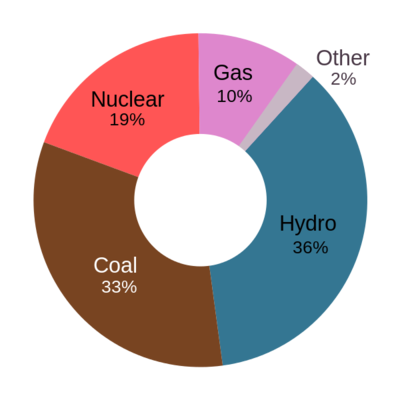People differ in the way that they can (or like to) consume information, especially in educational contexts. Some people might prefer information provided in text, or video, or audio; and their accessibility needs can also influence their preferences.
But while accessibility for images often focuses on providing a text alternative for screen-reader users, we can also look at the issue from the other way around—providing a graphic alternative for text to make the underlying information or concept easier to understand. This includes for people with reading difficulties.
Example
Imagine that some prose has been provided to describe—in this case—the division of energy sources for Romania’s electricity production:
“When we consider energy consumption trends farther east in Europe, however, we might consider the Carpathian nation of Romania as an example. Here, we find an interesting picture, where electricity is provided by diverse energy sources, with no single energy source constituting a clear majority. According to the most recent statistics available to us, we see that hydro-electric power is the most prevalent source at slightly over one third (36%), followed closely by coal (33%), then nuclear (19%), and gas at 10%. Completing the Romanian picture, we find that other energy sources make up the remaining 2%.”
All the correct information is there, but it’s hidden among a lot of unnecessary verbosity. By providing a doughnut chart to capture the salient points, we can be more inclusive of those who learn better visually and assist the understanding of everyone: Seeing the percentages visually, as segments, makes the proportions easier to compare.